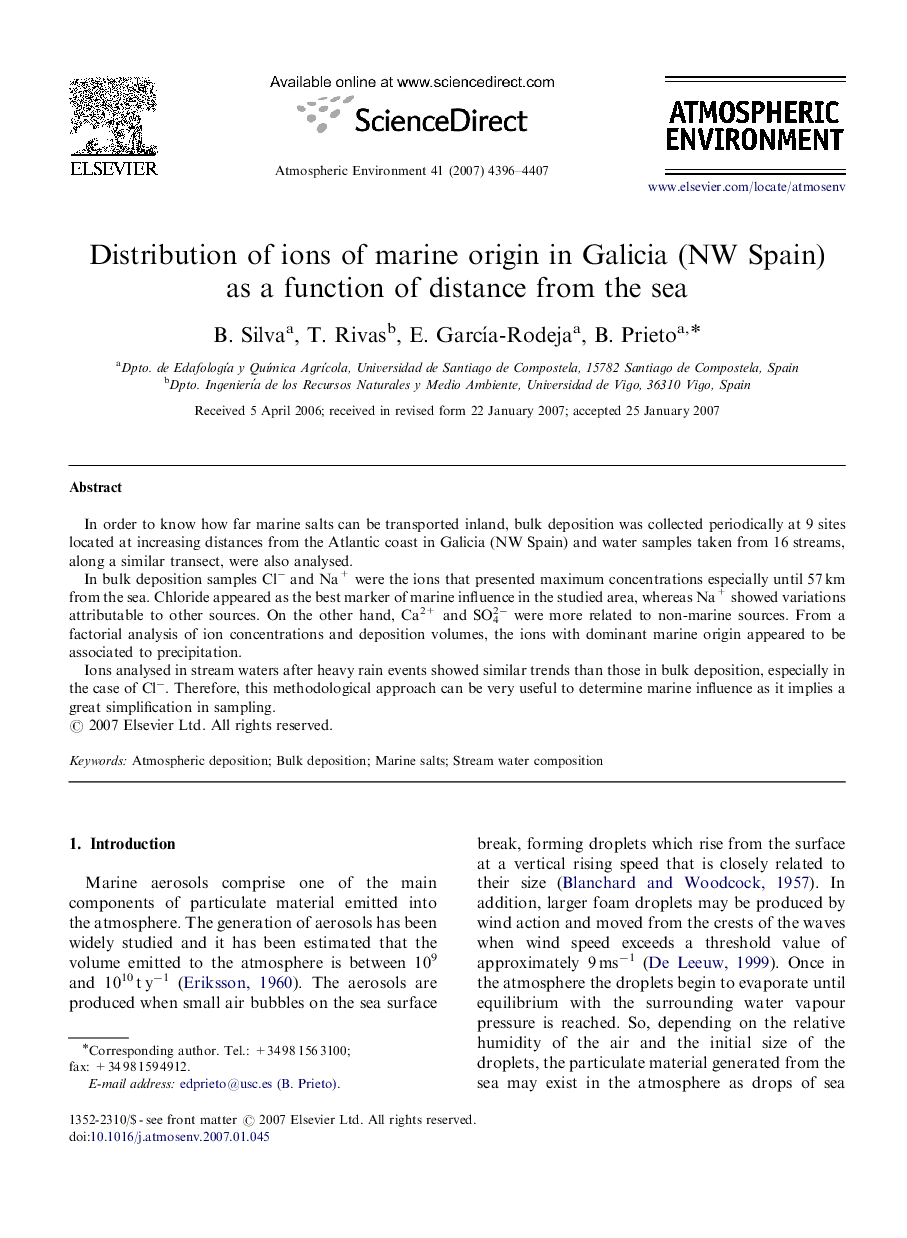| Article ID | Journal | Published Year | Pages | File Type |
|---|---|---|---|---|
| 4443275 | Atmospheric Environment | 2007 | 12 Pages |
In order to know how far marine salts can be transported inland, bulk deposition was collected periodically at 9 sites located at increasing distances from the Atlantic coast in Galicia (NW Spain) and water samples taken from 16 streams, along a similar transect, were also analysed.In bulk deposition samples Cl− and Na+ were the ions that presented maximum concentrations especially until 57 km from the sea. Chloride appeared as the best marker of marine influence in the studied area, whereas Na+ showed variations attributable to other sources. On the other hand, Ca2+ and SO42− were more related to non-marine sources. From a factorial analysis of ion concentrations and deposition volumes, the ions with dominant marine origin appeared to be associated to precipitation.Ions analysed in stream waters after heavy rain events showed similar trends than those in bulk deposition, especially in the case of Cl−. Therefore, this methodological approach can be very useful to determine marine influence as it implies a great simplification in sampling.
